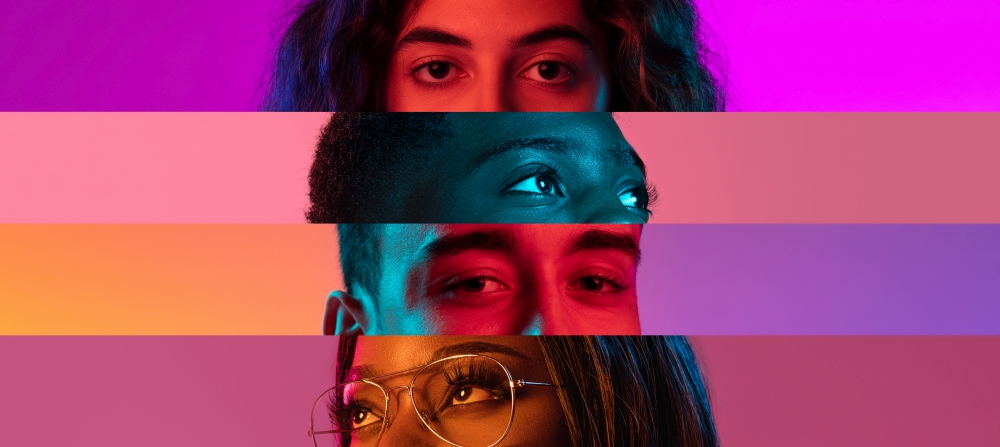Celebrating Diversity: Plastic Surgery in POC, Black, and Latinx/Hispanic Communities

- Bridging the Gap: Addressing the Unique Needs of POC, Black, and Latinx Patients in Plastic Surgery
- Representation Matters: Embracing Cultural Identity and Ethnic Features in Aesthetic Enhancement
- Overcoming Stigmas: Empowering POC, Black, and Hispanic Communities through Plastic Surgery
- The Surgeon’s Perspective: Expert Insights on Providing Safe and Effective Plastic Surgery for POC, Black, and Hispanic Patients
Celebrating diversity, representation, and empowerment: Surgeons provide safe and effective plastic surgery, addressing unique needs and embracing cultural identity for POC, Black, and Hispanic patients.
Bridging the Gap: Addressing the Unique Needs of POC, Black, and Latinx Patients in Plastic Surgery
In recent years, the field of plastic surgery has made significant strides in recognizing and addressing the unique needs of POC (People of Color), Black, and Latinx patients. As the industry becomes more inclusive and diverse, it is crucial to understand the importance of bridging the gap and providing tailored care that respects and celebrates the cultural identity and ethnic features of these communities. In this article, we will explore the efforts being made to address the unique needs of POC, Black, and Latinx patients in plastic surgery and highlight the importance of cultural competence in delivering optimal outcomes.
1. Understanding Diversity in Aesthetic Goals:
One of the key aspects of addressing the unique needs of POC, Black, and Latinx patients in plastic surgery is recognizing and understanding the diverse aesthetic goals within these communities. Beauty ideals can vary greatly across different cultures and ethnicities, and what may be considered desirable in one community may differ from another. Plastic surgeons are increasingly taking the time to listen to their patients, understand their cultural influences and personal preferences, and collaborate with them to achieve results that enhance their natural beauty while respecting their cultural identity.
2. Ethnic Considerations in Surgical Techniques:
Plastic surgeons are now more attuned to the specific anatomical variations and considerations that come with treating POC, Black, and Latinx patients. These populations may have distinct facial and body features, such as skin tone, hair texture, and body proportions, which require specialized surgical techniques and approaches. Surgeons with experience in treating diverse patient populations can utilize their expertise to customize procedures and optimize outcomes while minimizing the risk of complications.
3. Addressing Scar Management and Keloid Tendencies:
POC, Black, and Latinx patients may have a higher tendency to develop keloids, which are raised scars that extend beyond the boundaries of an initial wound. Plastic surgeons are aware of this potential and take extra precautions to minimize scarring and keloid formation in these patients. They employ advanced scar management techniques, including meticulous closure methods, silicone gel sheets, and laser treatments, to optimize wound healing and minimize visible scarring.
4. Culturally Competent Patient Care:
Cultural competence plays a pivotal role in providing exceptional patient care to POC, Black, and Latinx individuals seeking plastic surgery. Plastic surgeons and their teams strive to create a welcoming and inclusive environment where patients feel comfortable discussing their goals, concerns, and cultural considerations. This includes having diverse staff members, offering multilingual services, and educating themselves on the cultural norms and practices of the communities they serve. By fostering a culturally competent environment, plastic surgeons can establish trust and rapport with their patients, ensuring a positive and satisfactory surgical experience.
Addressing the unique needs of POC, Black, and Latinx patients in plastic surgery is crucial for providing inclusive and effective care. The field is evolving to embrace diversity and cultural competence, with plastic surgeons striving to understand the diverse aesthetic goals, employing specialized techniques, addressing scar management, and fostering culturally competent patient care. By bridging the gap and tailoring treatments to the specific needs of these communities, plastic surgery can empower individuals to enhance their natural beauty while preserving their cultural identity and achieving the desired outcomes.
Representation Matters: Embracing Cultural Identity and Ethnic Features in Aesthetic Enhancement
In the world of plastic surgery, the concept of beauty has evolved to embrace diversity and celebrate individuality. Today, more than ever, there is a growing recognition of the importance of representation and the need to honor and preserve cultural identity in aesthetic enhancement. This shift has been particularly significant for POC, Black, and Hispanic populations, who have long sought to redefine beauty standards and find plastic surgery solutions that honor their unique ethnic features. In this article, we explore the concept of representation in plastic surgery, highlighting the significance of embracing cultural identity and ethnic features in aesthetic enhancement.
1. Challenging Conventional Beauty Standards:
Historically, beauty standards have been heavily influenced by Eurocentric ideals, often disregarding the diverse features and characteristics of POC, Black, and Hispanic populations. However, the modern approach to plastic surgery recognizes the importance of challenging these conventional beauty standards. Plastic surgeons now aim to enhance and celebrate the distinct ethnic features that contribute to a person’s cultural identity. This includes considerations such as skin tone, facial structure, body shape, and other unique traits that make each individual beautifully unique.
2. Customized Approaches for Ethnically Diverse Patients:
Plastic surgeons specializing in serving POC, Black, and Hispanic populations understand the significance of customized approaches. They are well-versed in the unique anatomical variations and aesthetic preferences of diverse ethnicities. By utilizing advanced techniques and personalized treatment plans, these surgeons can achieve results that enhance the natural beauty of their patients while respecting their cultural identity. This approach ensures that patients feel seen, valued, and empowered in their decision to pursue aesthetic enhancement.
3. Preserving Cultural Identity and Ethnic Features:
One of the key aspects of representation in plastic surgery is the preservation of cultural identity and ethnic features. Patients from POC, Black, and Hispanic communities often seek procedures that allow them to maintain their distinct heritage while addressing specific concerns. Plastic surgeons skilled in working with diverse populations understand the delicate balance between enhancement and preservation. They strive to create outcomes that reflect the patient’s cultural identity and empower them to feel proud of their unique features.
4. Raising Awareness and Inspiring Confidence:
Representation in plastic surgery goes beyond physical transformations. It plays a vital role in raising awareness and inspiring confidence within POC, Black, and Hispanic communities. By showcasing a diverse range of successful procedures and highlighting the achievements of individuals from these populations, plastic surgery can serve as a source of inspiration and empowerment. When individuals see others who share their cultural background embracing aesthetic enhancement, it fosters a sense of belonging and encourages them to pursue their own aesthetic goals.
Representation matters in plastic surgery, particularly for POC, Black, and Hispanic populations. Embracing cultural identity and ethnic features in aesthetic enhancement not only challenges conventional beauty standards but also celebrates the diversity that makes each individual unique. By offering customized approaches, preserving cultural identity, and raising awareness, plastic surgeons can empower patients from these communities to embrace their heritage while pursuing their aesthetic aspirations. As the field continues to evolve, the focus on representation will play a crucial role in ensuring that plastic surgery remains inclusive, diverse, and empowering for all individuals.
Overcoming Stigmas: Empowering POC, Black, and Hispanic Communities through Plastic Surgery
Plastic surgery has long been associated with a narrow standard of beauty that often overlooks the diverse features and cultural identities of POC, Black, and Hispanic populations. However, in recent years, there has been a significant shift towards embracing and celebrating diversity in the field of plastic surgery. This shift is empowering individuals from these communities to overcome stigmas, challenge societal beauty norms, and redefine their own standards of beauty. In this article, we will explore how plastic surgery is playing a transformative role in empowering POC, Black, and Hispanic communities and helping individuals embrace their unique beauty.
1. Breaking Beauty Stereotypes:
Historically, beauty standards have predominantly focused on Eurocentric features, leaving little room for the rich diversity found within POC, Black, and Hispanic populations. Plastic surgery is now playing a pivotal role in breaking these stereotypes by offering a range of procedures specifically designed to enhance and celebrate ethnic features. Surgeons are employing advanced techniques to preserve and accentuate unique characteristics such as skin tone, facial structure, and body shape. This shift in approach allows individuals to feel empowered and confident in their natural beauty.
2. Cultural Identity and Aesthetic Enhancement:
Plastic surgery has become a platform for individuals from diverse cultural backgrounds to embrace their heritage and express their identity. Procedures such as rhinoplasty, breast augmentation, and body contouring can be tailored to honor and enhance specific ethnic features, allowing individuals to maintain a strong connection to their cultural identity while achieving their desired aesthetic goals. This recognition and celebration of cultural diversity contribute to a more inclusive and representative landscape in the field of plastic surgery.
3. Boosting Self-Confidence and Empowerment:
Plastic surgery has the potential to positively impact an individual’s self-confidence and overall well-being. By addressing specific concerns and enhancing physical features, individuals from POC, Black, and Hispanic communities can experience a renewed sense of self-esteem and empowerment. This increased self-confidence can translate into various aspects of life, including personal relationships, professional endeavors, and social interactions. Plastic surgery becomes a tool for self-expression and self-care, enabling individuals to take control of their own narratives and define their own standards of beauty.
4. Educating and Challenging Stigmas:
Education and awareness play a crucial role in overcoming stigmas associated with plastic surgery in POC, Black, and Hispanic communities. By providing accessible information, addressing misconceptions, and sharing success stories, plastic surgeons and community advocates are actively challenging negative perceptions and promoting a more inclusive understanding of aesthetic enhancement. Through open dialogue, cultural sensitivity, and representation, the goal is to create safe spaces where individuals can openly explore their options, make informed decisions, and embark on their own transformative journeys.
In conclusion, plastic surgery is making significant strides in empowering POC, Black, and Hispanic communities by helping individuals overcome stigmas and embrace their unique beauty. By breaking beauty stereotypes, honoring cultural identities, boosting self-confidence, and challenging stigmas through education, plastic surgery is playing a transformative role in empowering individuals to redefine beauty on their own terms. As the field continues to evolve and embrace diversity, it opens doors for more inclusive discussions, representation, and ultimately, a more empowered and confident society.
The Surgeon’s Perspective: Expert Insights on Providing Safe and Effective Plastic Surgery for POC, Black, and Hispanic Patients
Plastic surgery is a transformative field that aims to enhance individual beauty and boost self-confidence. However, it is essential to recognize that the approach to plastic surgery should be tailored to the unique needs and considerations of different patient populations, including POC, Black, and Hispanic patients. In this article, we will explore the surgeon’s perspective and gain expert insights into providing safe and effective plastic surgery for these communities.
1. Cultural Sensitivity and Understanding:
Plastic surgeons have a responsibility to approach POC, Black, and Hispanic patients with cultural sensitivity and understanding. Recognizing and respecting the diverse backgrounds and experiences of these communities is crucial in establishing trust and rapport. Surgeons must be knowledgeable about cultural beauty standards and the significance of ethnic features, as this understanding plays a vital role in achieving optimal outcomes while preserving the patient’s unique identity.
2. Tailored Treatment Plans:
A key aspect of providing safe and effective plastic surgery for POC, Black, and Hispanic patients is the development of tailored treatment plans. Every patient is unique, and their goals, concerns, and anatomical considerations must be taken into account. Surgeons should have a deep understanding of the varying skin types, hair textures, and body structures within these communities to ensure personalized approaches that address individual needs.
3. Addressing Specific Concerns:
POC, Black, and Hispanic patients may have specific concerns that require careful attention. For example, keloid scarring, which is more prevalent in individuals with darker skin tones, may need to be addressed with specialized techniques and aftercare strategies. Surgeons must be experienced in handling these challenges and knowledgeable about the specific risks and considerations associated with plastic surgery in diverse populations.
4. Diversity in Surgeon Representation:
Having a diverse group of plastic surgeons who understand the unique needs of POC, Black, and Hispanic patients is invaluable. Representation matters, as it fosters trust and confidence in the healthcare provider. Patients feel more comfortable discussing their goals, concerns, and expectations with surgeons who can relate to their experiences. Increasing diversity within the field of plastic surgery helps ensure that patients from all backgrounds receive the highest standard of care and achieve the best possible outcomes.
5. Collaboration and Continuing Education:
Surgeons must continuously educate themselves and stay updated on the latest advancements in plastic surgery techniques and technologies. Collaborating with colleagues and participating in conferences and workshops that focus on plastic surgery for diverse populations can enhance knowledge and expertise in this area. This ongoing learning process enables surgeons to provide safe and effective care and adapt their approaches to meet the evolving needs of POC, Black, and Hispanic patients.
The surgeon’s perspective plays a vital role in providing safe and effective plastic surgery for POC, Black, and Hispanic patients. Cultural sensitivity, tailored treatment plans, addressing specific concerns, diverse surgeon representation, and a commitment to ongoing education are essential factors in ensuring optimal outcomes. By embracing these principles, plastic surgeons can create a supportive and inclusive environment that celebrates diversity and empowers patients from all backgrounds to embark on their plastic surgery journeys with confidence and trust.



